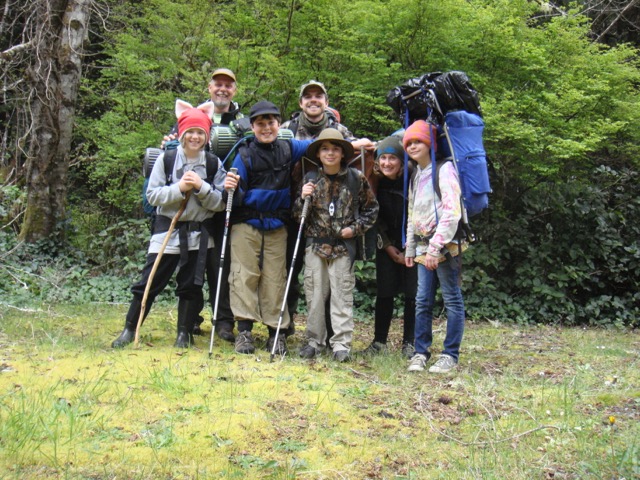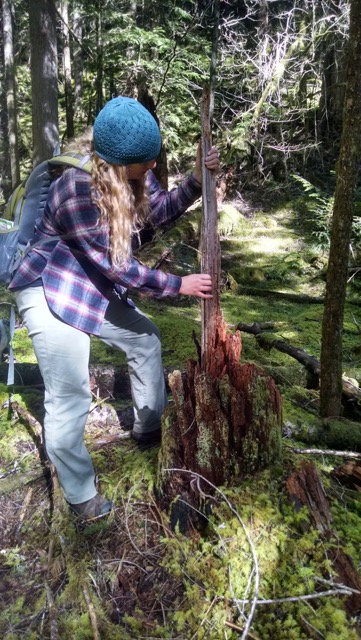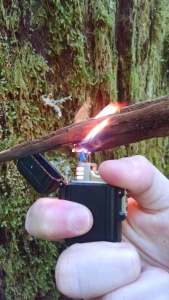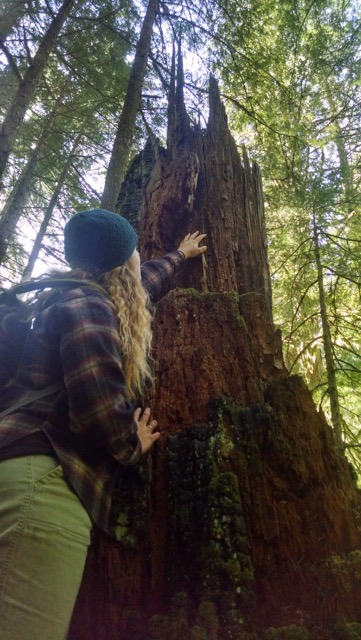It was the old bait and switch. Our four apprentices all aged 12 years were going to get a bit of a surprise that wet spring afternoon. This ‘outing’ was supposed to be their last hurrah to wind down their year long apprenticeship learning survival and naturalist skills. We told them to be prepared for a day hike – bring the necessities such as a water bottle and a snack.
After several hours of hiking the kids felt it was time to head back to the cars. It had been raining all day and was around 45 degrees on a moist Northwest spring day. That’s when we pounced.
“Oh by the way, you guys are staying the night out here.” Silence.
Then, “Wait, are you serious?”. Disbelief and fear began to permeate their thoughts as we assured them that yes we are serious and we better start making a shelter.
After an hour of finding a place to bunker down we made the decision that this shelter needed to be fire dependent and built to fit all seven of us. We brought a bow drill but the look of desperation on the kids faces made us relent and so we offered the “thumb drill” aka lighter.
If you have ever been in the rain soaked Pacific Northwest rainforest you would note that everything is dripping, soaking, water logged, and cold. So how does one make a fire out of materials found in the woods? There are of course the hidden away places, underneath logs, in hollows, or the lower dead branches of conifers. But these are still damp and take a lot of time to dry out underneath clothing and an immense amount of patience is needed when trying to blow a damp tinder bundle into flame.
Walking along the trail I spotted a stump of a Douglas fir tree. It was only waist high or so but had long thin pillars sticking out like the sky line of a major city. I called the kids over and asked them what was strange about this particular stump. They made some interesting observations but hadn’t yet gotten to the point. Finally one of them touched a spire and noted it was very hard wood while the bottom of the stump was rotting out. I told him to take a whiff – “It smells like sap!”. What those apprentices smelled was pitch wood or “fat wood”, the resin soaked wood that is sometimes left behind after a tree dies.
Our Northwest forests are an amazing source of this phenomenon due to the massive logging industry and clear cutting. When a tree such as a pine, fir or Doug fir is wounded or cut down it sends sap or resin to the wounded area. In the case of our majestic Douglas firs these have the richest resins which makes it highly flammable. After a tree is cut down the resin will fill the heartwood (the inner living part of the tree) and make this inner layer hard, flammable, and rot resistant.
The key to finding this survival gold mine is keeping an eye out for the tell tale signs of stumps with pillars or spires that stick out while the rest of the stump is rotting away. Use your nose to detect the smell of resin then pull off the chunks. If you have a lighter try lighting it. If it is good solid pitch wood it will stay lit like a candle wick.
I had the kids take off pieces from the stump and to scout out for others. Back at camp we began to shave off tiny pieces into a little pile. Once we collected enough fire making materials we lit a pitch stick and caught the little shavings on fire. The two girls began to very slowly feed the fire more pitch wood shavings then gradually began to add pencil lead sized twigs. The entire process took over an hour to achieve a self feeding crackling fire. Without the pitch wood we would have been stuck with damp tinder material which could have taken twice as long to make.
I have been saved by finding pitch wood countless times even in wet snowy conditions. I am thankful to the trees who provide us with so many gifts – even after they have died trees keep on giving.



